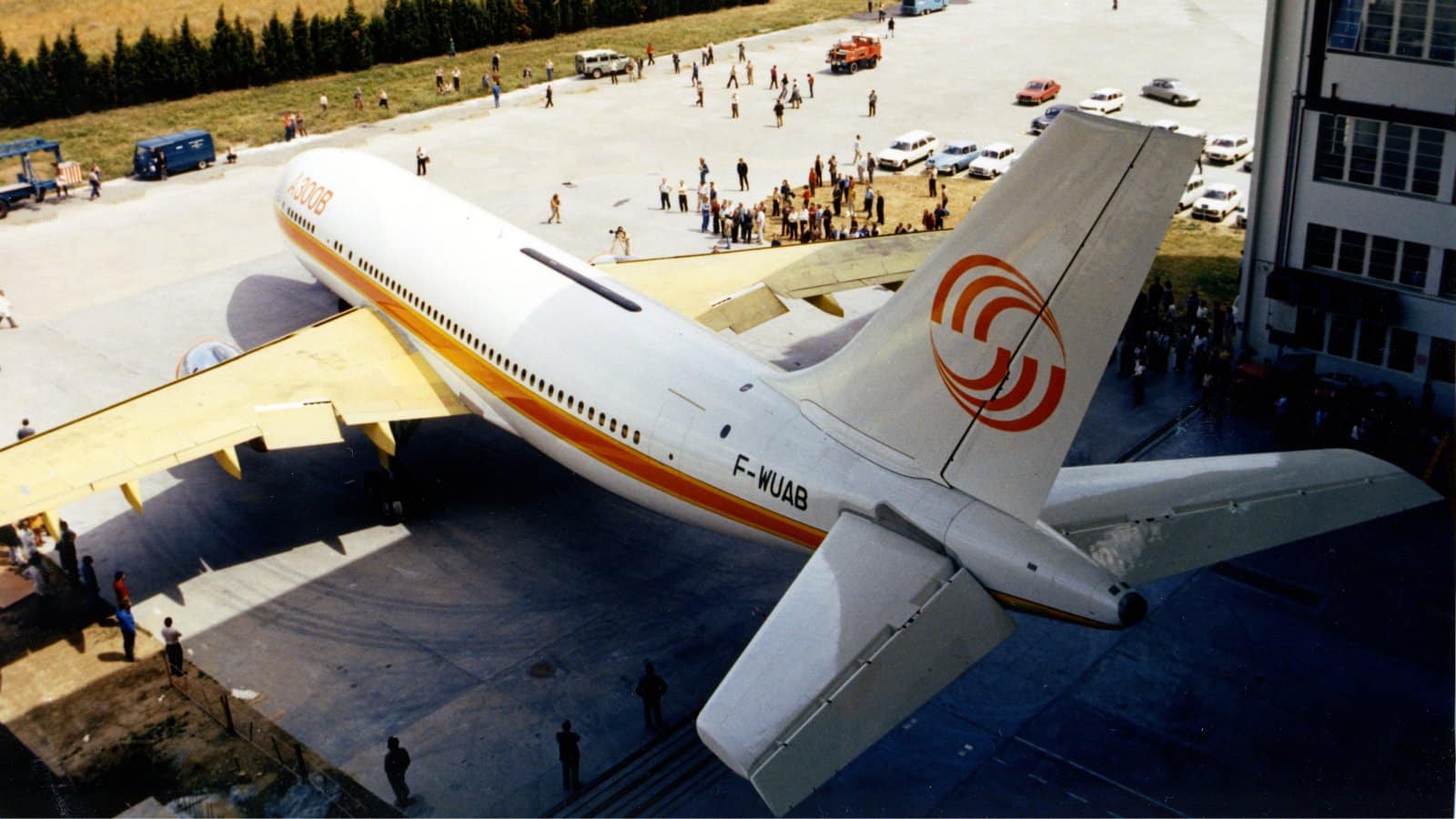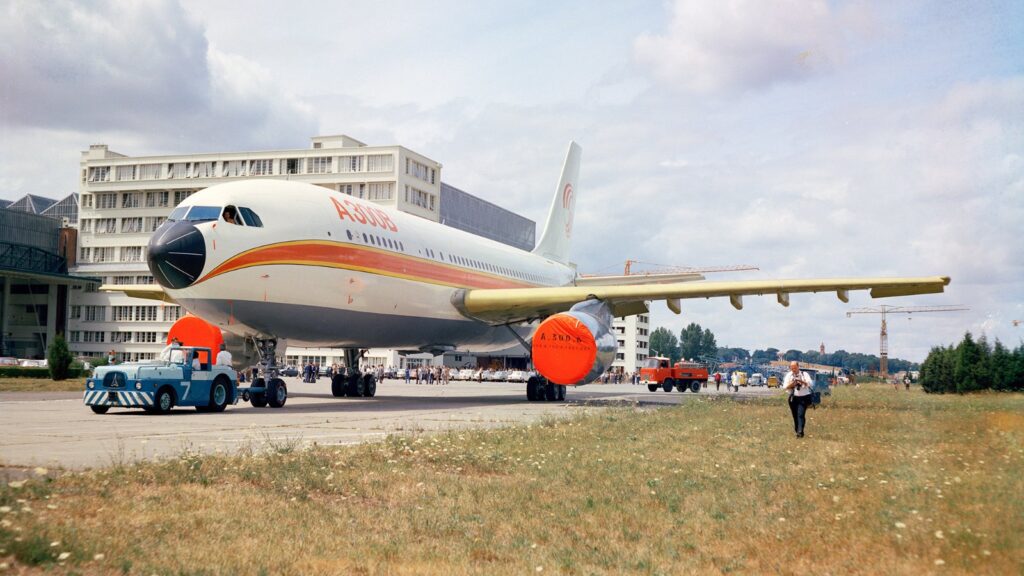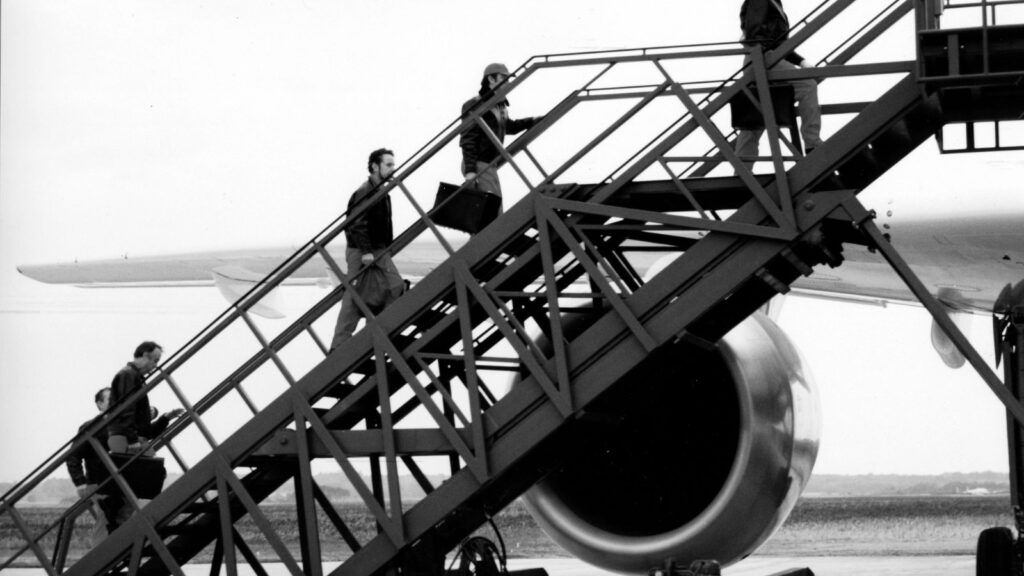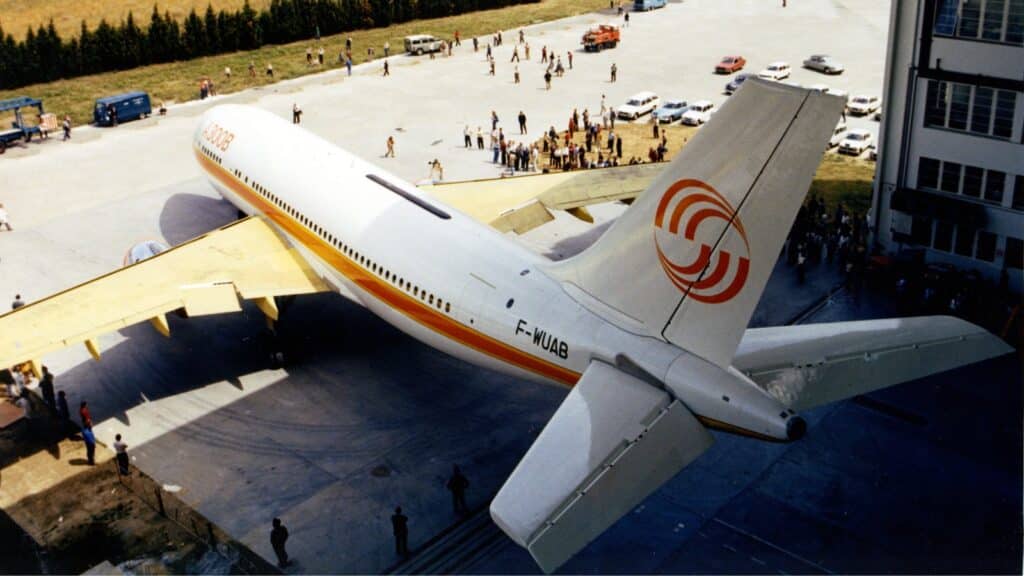Aerospace
10 facts about the Airbus First A300B Aircraft.
Airbus celebrates the launch of its first A300 aircraft. The maiden flight of the #A300 occurred on this day, 50 years ago.
#Airbus #A300B #Airbusaircraft #A330 #A300beluga

Obtaining success is not an easy challenge. Most of the time, the corporation faces financial and political difficulties. Airbus is celebrating the 50th anniversary of the Airbus A300B aircraft. The Airbus journey was truly remarkable, and many have stated that it is one of the top aerospace companies in the world. The aircraft program served as a fundamental backbone for wide-body aircraft as well as the structural framework for later versions of the aircraft. The A300B aircraft is also used to construct the A330 and A340 frameworks, as well as the Beluga Aircraft, which is based on the same framework but has been modified to transport larger aircraft.
From the design phase through the final production, Airbus faced numerous challenges, but it eventually achieved its goal. This article will go over some astonishing facts regarding the Airbus First A300B airplane.
EXPLORER design study opens up new themed worlds for VIP cabins(Opens in a new browser tab)
1. World’s first twin-engined widebody commercial aircraft
The world’s first twin-engined widebody commercial aircraft, the A300B1 development aircraft, MSN 1, with the registration F-WUAB, took to the skies on October 28, 1972, at Toulouse. The flight lasted 1 hour and 25 minutes, with a top speed of 185kt (342.6Kmh) at a height of 14,000ft (4,300m). The autopilot was activated, moving surfaces were tested, and the landing gear was retracted and deployed. The test flight crew included Captain Max Fischl, First Officer Bernard Ziegler, Flight Test Engineers Pierre Caneil and Gunter Scherer, and Romeo Zinzoni in the cockpit as Test Flight Engineer/Mechanic.
Why Are Most Airplane Seats Blue?(Opens in a new browser tab)
2. Why does every Airbus aircraft start with a 300?
By 1966, the studies had evolved into a collaborative European project, with the French government naming Sud-Aviation as its partner, while Deutsche Airbus and Hawker Siddeley represented Germany and the United Kingdom, respectively. Initially, it was planned to create airplanes with 270 to 300 aircraft seats. That is what Airbus has named their A300 aircraft.
Airbus Beluga delivers Airbus satellite to Kennedy Space Center(Opens in a new browser tab)
3. Due to its size, Airbus faces difficulties with engine development.
International phase Rolls Royce was the first engine power choice for the A300 aircraft. However, due to uncertain commercial prospects and since Rolls-Royce, the “official” UK partner in the Airbus venture, decided to focus its efforts on the development of a less powerful engine, the UK government decided to withdraw from the program in April 1969. As a result, the General Electric CF6-50A engine was chosen as the powerplant for the A300, with the added benefit of being a proven engine, lowering the risks associated with the development and certification of a brand-new airframe.
4. Airlines were requested to lower the capacity of the A300 seats.
The aircraft’s capacity had also been decreased by the time it was launched to roughly 225 passengers at the request of the first two prospective clients, Air France and Lufthansa. As a result, the design was modified to include a revised fuselage cross-section that could fit two conventional LD3 containers side by side in the belly holds and eight seats in a row (instead of nine) with two aisles. To reflect the improved configuration, this new variant was given the designation A300B.
5. Airbus functions with 4 different nations and cultures.
According to Airbus, it was considered difficult at the time to design, manufacture, assemble, and market a cutting-edge and complicated enterprise like a new generation airplane by four nations with four different languages, cultures, historical disparities, and various working processes. The initiative was supported by contributions from Spain, France, Germany, and Britain, which enabled Airbus Aircraft to develop a range of goods.
6. Modifications have been made to various A300B aircraft variants.
The two extra aircraft were used for flight testing and development prior to being delivered to clients. MSN2 was the second and last A300B1 to be built. MSN 3 was the first A300B2. Stretching the original A300B1 was done at Air France’s request. The A300B2 was 2.6m longer and had a two-class capacity, which became the norm for all subsequent A300B2 & B4 variants (the B4 had the same seating capacity as the initial B2 but with an increased range, allowing it to enter the medium-range market)
7. A300 is designed to last for almost 35 years.
Later, the A300 proved to be an exceptionally effective development platform, enabling the design, testing, and construction of various versions over the course of its planned lifespan of about 35 years. These include the A300B10, which had its initial flight in April 1982 and was eventually launched in 1978 as the A310. The A310 was the medium-long haul, shorter, lower-capacity version of the A300, but with a fully redesigned wing.
8. The same airframe was used for Beluga aircraft too.
In 1993, the passenger plane’s cargo variant, the A300-600F, started flying. The A300B9 and A300B11 programs, which used the same ground-breaking fuselage cross-section as the first A300, would eventually serve as the prototype for the A330 and A340 family of aircraft. Last but not least, five A300-600ST “Belugas” would be produced to satisfy Airbus’ internal needs for more space for large transport and to replace the fleet of deteriorating Aero Spacelines Super Guppy aircraft. All kinds and configurations of A300 family aircraft totaled 821 in total production.
On this day 50 years ago, the #A300 took to the skies? for the very first time. This incredible achievement and constant design evolution across the family led to the first of many firsts that propelled #Airbus to where it is today.https://t.co/vl078ttkkK pic.twitter.com/vC7rMU0Ymu
— Airbus (@Airbus) October 28, 2022
9. There are currently more than 250 A300/A310 aircraft in use.
37 operators are now using more than 250 A300/A310 aircraft. The third most often used type of freighter worldwide, freighters make up 75% of the fleet. Four significant clients operate more than 60% of the fleets, and they plan to continue doing so through at least 2030.
10. The early slogan of Airbus was “the start of something big.”
Early A300 advertisements from 1968 described it as “the start of something big.” After 50 years, Airbus has become a truly global firm, with operations in five different continents for manufacture, assembly, sales, and services. The A380 and A350 are two examples of cutting-edge commercial aircraft developed by Airbus. Both are currently distinct characteristics of aircraft. Airbus advanced in a variety of aerospace projects, including helicopters, space technology, EVtol, and defense.
Please share this post with your loved ones if you enjoyed it. Thanks for reading.
Story courtesy: Airbus

Aerospace
Boeing Transfers Rocket Stage to NASA, Paving Way for Human Moon Mission

Boeing has achieved a significant milestone by providing NASA with the second core stage of the Space Launch System (SLS) rocket.
This crucial component, crafted at NASA’s Michoud Assembly Facility (MAF), is set to propel the Artemis II crew into lunar orbit, marking humanity’s return to deep space after a 50-year hiatus.
The monumental Boeing-built rocket stage, the largest element of the Artemis II mission, will embark on a journey aboard the Pegasus barge, traveling 900 miles to NASA’s Kennedy Space Center.
Comparison of two legendary aircraft B777x vs B747 aircraft:Click here
Upon arrival, it will be meticulously integrated with other essential Artemis II components, including the upper stage, solid rocket boosters, and NASA’s Orion spacecraft within the iconic Vehicle Assembly Building. This intricate integration process is a vital step toward the eagerly anticipated Artemis II launch, slated for 2025.
“Boeing-built products helped land humankind on the moon in 1969, and we’re proud to continue that legacy through the Artemis generation,” remarked Dave Dutcher, vice president and program manager for Boeing’s SLS program. “Together, with NASA and our industry partners and suppliers, we are building the world’s most capable rocket and paving the way to deep space through America’s rocket factory in New Orleans.”
NASA, Lockheed Martin Reveal X-59 Quiet Supersonic Aircraft:Click here
The delivery of Core Stage 2 marks a significant achievement in the evolution of the SLS rocket. Towering over 200 feet and powered by four RS-25 engines, this core stage, coupled with two solid-fueled booster rockets, will generate a staggering 8.8 million pounds of thrust. This immense power is crucial to launching Artemis II and future missions into the vast expanse of space.
The SLS rocket stands unparalleled in its capability to transport both crew and substantial cargo to the moon and beyond in a single launch. Its extraordinary capacity will facilitate the delivery of human-rated spacecraft, habitats, and scientific missions to destinations including the moon and Mars, ushering in a new era of space exploration.
-

 Travel1 week ago
Travel1 week agoAir India to Expand US Operations with Three New Routes After a Decade
-

 Travel2 weeks ago
Travel2 weeks agoWhy We Should Avoid These Stamps in a Passport
-

 Airlines1 month ago
Airlines1 month agoInvestigations Reveal Fake Chinese Titanium in Boeing and Airbus Jets
-

 Tech4 weeks ago
Tech4 weeks agoChina’s CATL Plans 1,800-Mile Electric Plane Launch by 2027
-

 Airport3 days ago
Airport3 days agoTop 10 Largest Airports in the World by Size
-

 Aerospace4 weeks ago
Aerospace4 weeks agoChina’s Fighter Jets Turn Wings into Autonomous Drones
-

 Airlines4 days ago
Airlines4 days agoAir India Rolls Out A350s for Delhi-New York JFK and Newark Routes
-

 Defence3 weeks ago
Defence3 weeks agoBoeing Enhances Chinook with New Engines and Block II Upgrades at $96 Million











